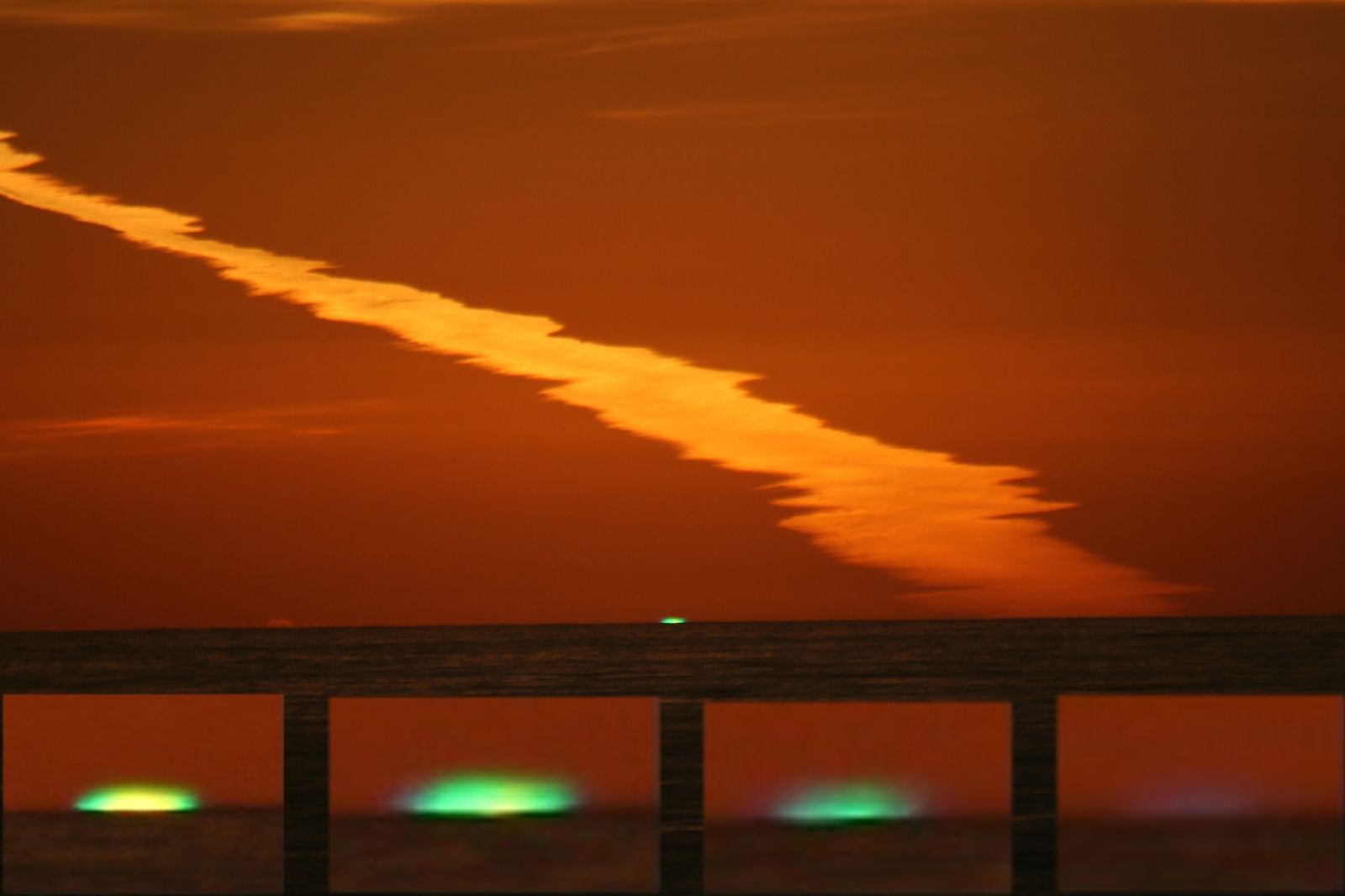How to observe the mythical green flash, visible at sunrise and sunset?
Follow us on Google News (click on ☆)

A brief flash of green light may appear when the Sun sets over the ocean, a phenomenon known as the "green flash".
Image Wikimedia
The green flash is an optical phenomenon similar to a rainbow, produced by the refraction of sunlight. Normally, sunlight appears white because it contains all the wavelengths of visible light. However, when it passes through a denser medium, such as the Earth's atmosphere, the light separates into different colors.
This separation, called refraction, is particularly visible when the Sun is near the horizon. At this point, the light passes through the thickest part of the atmosphere at a sharp angle. This is why the green flash often appears just before the Sun disappears or just after it rises.
To maximize your chances of seeing this phenomenon, several conditions need to be met. You need to be able to see the Sun near the horizon, for example from the coast or at high altitudes. In coastal regions, the green flash is more visible on warm days when warm air lies over cooler water. These layers of air favor the refraction of light.
The presence of particles in the atmosphere also plays a crucial role. They can scatter blue and violet light, making the green light more visible. Johannes Courtial, an optics researcher, demonstrated this by adding milk powder to a tank of water and projecting white light into it. With the right concentration of particles, green appears.

Sunlight rays pass through the atmosphere, which acts as a prism.
Credit: Reproduced from "Johannes Courtial; A simple experiment that demonstrates the green flash".
The green flash usually lasts less than a second. But if you are lucky, this phenomenon could last for a minute or two. This rarely happens, but the green flash can persist if atmospheric conditions remain stable.